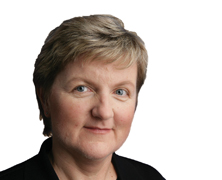I’ve learned that it is important to listen to your instincts and make sure you do something that you are passionate about. And never be afraid to ask questions.
I didn’t plan to become an engineer or work in the semiconductor industry. While I’ve always been good at math and science, I originally thought I would major in French since I loved languages and imagined travelling the world as a translator.
However, I soon realized that a French major was all about writing numerous papers (in French no less), which I was not excited about. I had wonderful science and engineering professors in both college and graduate school and through this experience realized that science was my passion. I also had a great research advisor in graduate school. He was a fabulous technologist, but more importantly, knew how to communicate science and technology. He illustrated to me the power of communication – especially when it comes to communicating technical concepts.
This is where my interest in marketing came from. To this day, I still get great satisfaction explaining complex technical problems or concepts to a layman.
My first job out of graduate school was as a process engineer where I worked on the front lines in customer fabrication labs or “fabs,” to deliver technology solutions. In this role, I traveled the world and saw firsthand the technical challenges faced by customers, and I also saw that sometimes the products that were offered to customers didn’t always hit the mark. I realized that I wanted to move my career in a direction where I would be in a position to influence product direction early on.
I’m proud to say that I can do that now in my role in product marketing at Applied Materials. To do this effectively, it’s important to tell a technology story to both customers and internal business partners in order to deliver the best solutions for customers.
I’ve learned that in order to be a successful leader, it is important to always think not one, but two or three steps ahead, with a clear vision of the end state in sight, whether that’s a technology solution, market share or customer penetration. To this end, I’m always asking questions: What next? And after that? And after that? You have to think several steps ahead in order to anticipate opportunities and challenges and plan strategies in response.







Mila Danusko, obdivuju Tve uspechy ! Samozrejme moc zdravim a vzpominam. S Alesem, Honzou a Petkou prejeme krasne Vanoce. V novem roce hodne pracovnich uspechu a spokojenosti. Pozdravuje taky Velena. Pa D